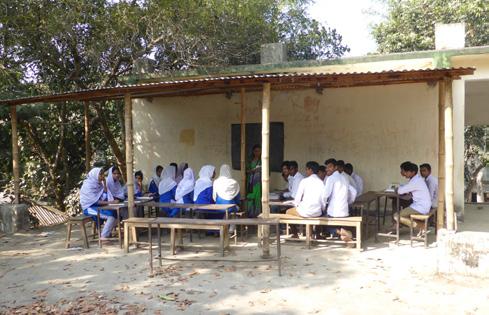
3 minute read
Ritu: the context
the context

Advertisement
Menstruation affects daily life
An estimated 1.8 billion girls (UNICEF, 2019), women, transgender men, intersex, and non-binary people of reproductive age menstruate every month. Although menstruation is a normal and natural element of the female reproductive system, it is a taboo topic that is often not talked about openly. Moreover, many women and girls, as well as other people that menstruate, lack the knowledge on how to maintain their menstrual health and hygiene. In addition to that, around 500 million women and girls lack access to gender-sensitive facilities and the menstrual products of their choice to manage their periods (FSG, 2020). These factors directly affect girls’ and women’s well-being during menstruation, their participation in daily life, and possibly their physical health.
What is menstrual health?
Menstrual health and hygiene encompasses ‘both menstrual hygiene management and the broader systemic factors that link menstruation with health, well-being, gender equality, education, equity, empowerment, and rights. These systematic factors
have been summarised by UNESCO as accurate and timely knowledge, available, safe, and affordable materials, informed and comfortable professionals, referral and access to health services, sanitation and washing facilities, positive social norms, safe and hygienic disposal, and advocacy and policy.’ (UNICEF, 2020).
A matter of human rights Menstrual health enables women to exercise human rights on the basis of equality. It is key to the fulfilment of women’s rights and at the same time connected to the rights to health, education, gender, dignity, water, and sanitation of any person who menstruates.
Sexual and reproductive health and rights Menstruation is a foundation issue of sexual and reproductive health and rights. Women’s and girls’ knowledge and experience of menstruation influences their understanding and decision-making over their bodies. Menstrual health contributes to healthy pregnancies, sexual awareness, and influences sexual enjoyment. At the same time, (hormonal) contraceptive use influences menstrual cycles and using the menstrual cycle as a form of contraceptive increases the risks of STIs and HIV.

Bangladesh
Bangladesh ranks 135 out of 189 countries in the
Human Development Index (129 in 2014) 1 . At the same time, Bangladesh is one of the most densely populated countries in the world with a current population of 168 million people. The population is still growing steadily and is estimated to reach 220 million by 2050. Around 30% of the population live in urbanised areas such as in the capital city Dhaka, which is estimated to have more than 15 million inhabitants. The position of women and girls in Bangladesh
According to the SDG Gender Index 2 Bangladesh is ranked 110 out of 129 countries. With a score of 49.2 the gender situation in Bangladesh is identified as ‘very poor’. This is despite substantial investments by the Government of Bangladesh that resulted in a steep decrease of maternal mortality and fertility rates. For example, with 59% of girls getting married before the age of 18, child marriage rates remains the highest in South Asia. 3
Although investments have led to greater gender parity in school enrolment, women’s participation in the workforce remains limited to low-paying sectors. 4
Menstrual health in Bangladesh
At the start of the Ritu programme, the most recent National Hygiene Survey in Bangladesh (2014) 5 provided a good insight into drivers, barriers, and indicators of girls’ menstrual health in Bangladesh.
Water, sanitation and hygiene (WASH) • Hand washing facilities are present in 40% of the households. • Functional, improved toilet facilities are in 80% of primary schools and 98% of secondary schools but of these, only 41% of primary and 57% of secondary school facilities were lockable.
Functional but unlockable gender-separate toilets were found in 22% of schools. • Water and soap is available within nine metres in 30% of primary school and 42% of secondary school toilets.
Information and education • Menstrual health education at school is offered to 6% of girls, who are often left to read biological information in textbooks by themselves. • Prior to menarche, 36% of girls and women had heard about menstruation. • On average 40% of the girls miss three days of school during their menstrual period.
Policies A number of government policies and plans mention menstrual health-related issues. For example, the government’s Water and Sanitation Sector Development Plan (2011–25) sets out the need for gender-appropriate WASH facilities, menstrual guidance for students and teachers, and the provision for the supply and disposal of menstrual products. The government’s most recent Seventh Five-Year Plan recognises the importance of inclusive and separate toilets for girls in schools with adequate facilities for sanitary pads and cleansing materials. 6






